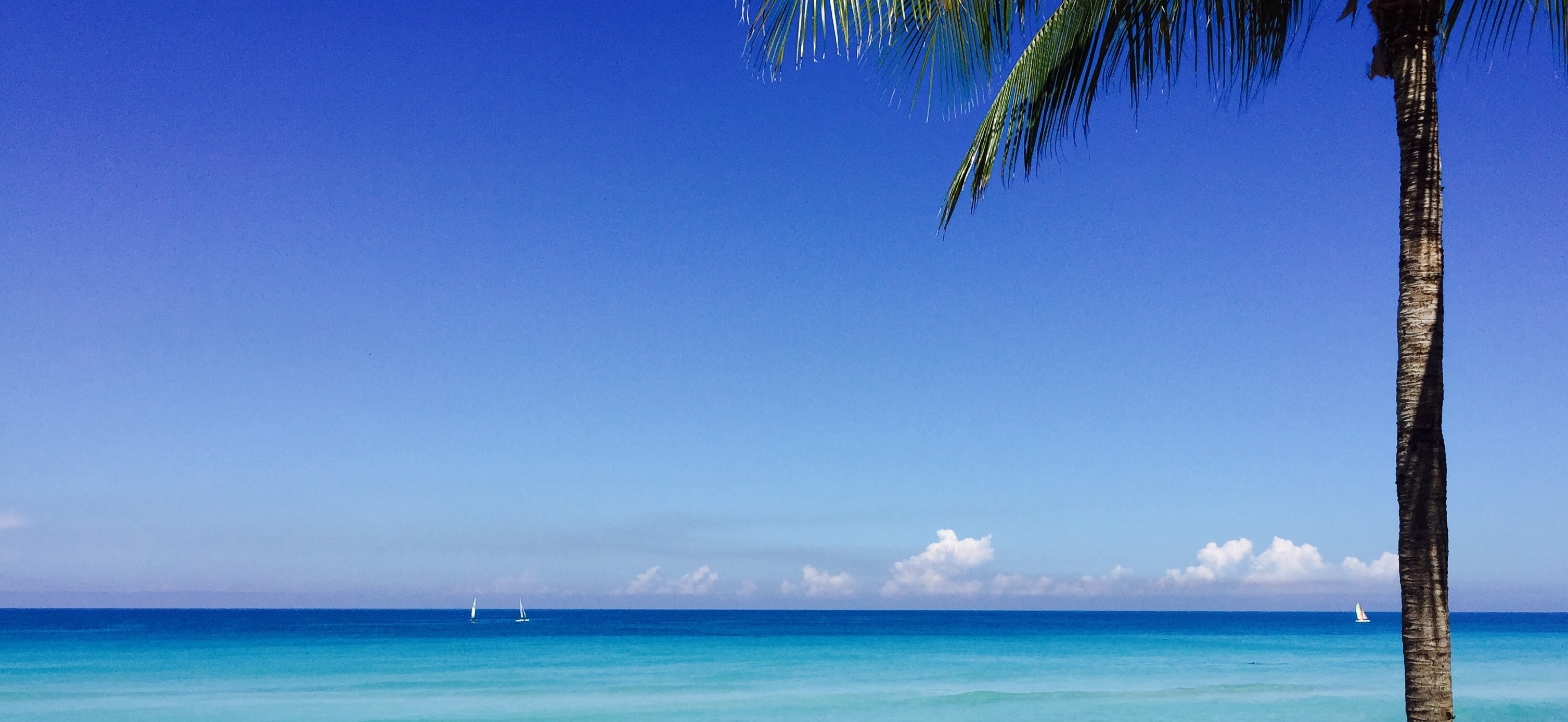In addition to seeing Lhasa, the main aim of our trip was to go to Everest Base Camp. Unlike the Nepali side, where you need to hike for eight days to get to base camp, on the Tibetan side you drive until about 3km from the camp, then walk the last bit to the mountain.
This unfortunately meant we had two days of driving ahead of us before we got there. The first overnight stop would be Shigatse (later nicknamed Shitgatse).
The distance between Shigatse and Lhasa is only about 280km, but Gyaltsen warned us it would take about six hours. This was not due to the quality of the roads (in fact, the roads are all fairly new and in good condition), nor was it because of traffic. It was simply because of another method the government used to exercise its control: ridiculous speed regulations.
All tourist vehicles are fitted with cameras and microphones to record everything in the car. All cars have a GPS tracker to check where and how fast they travel. Every 50km or so there is a police checkpoint where permits need to be checked and stamped. But the strangest thing of all was the speed limit. In certain places, for no particular reason at all, the speed limit was 30km per hour. There were speed cameras everywhere to make sure vehicles adhered to this.
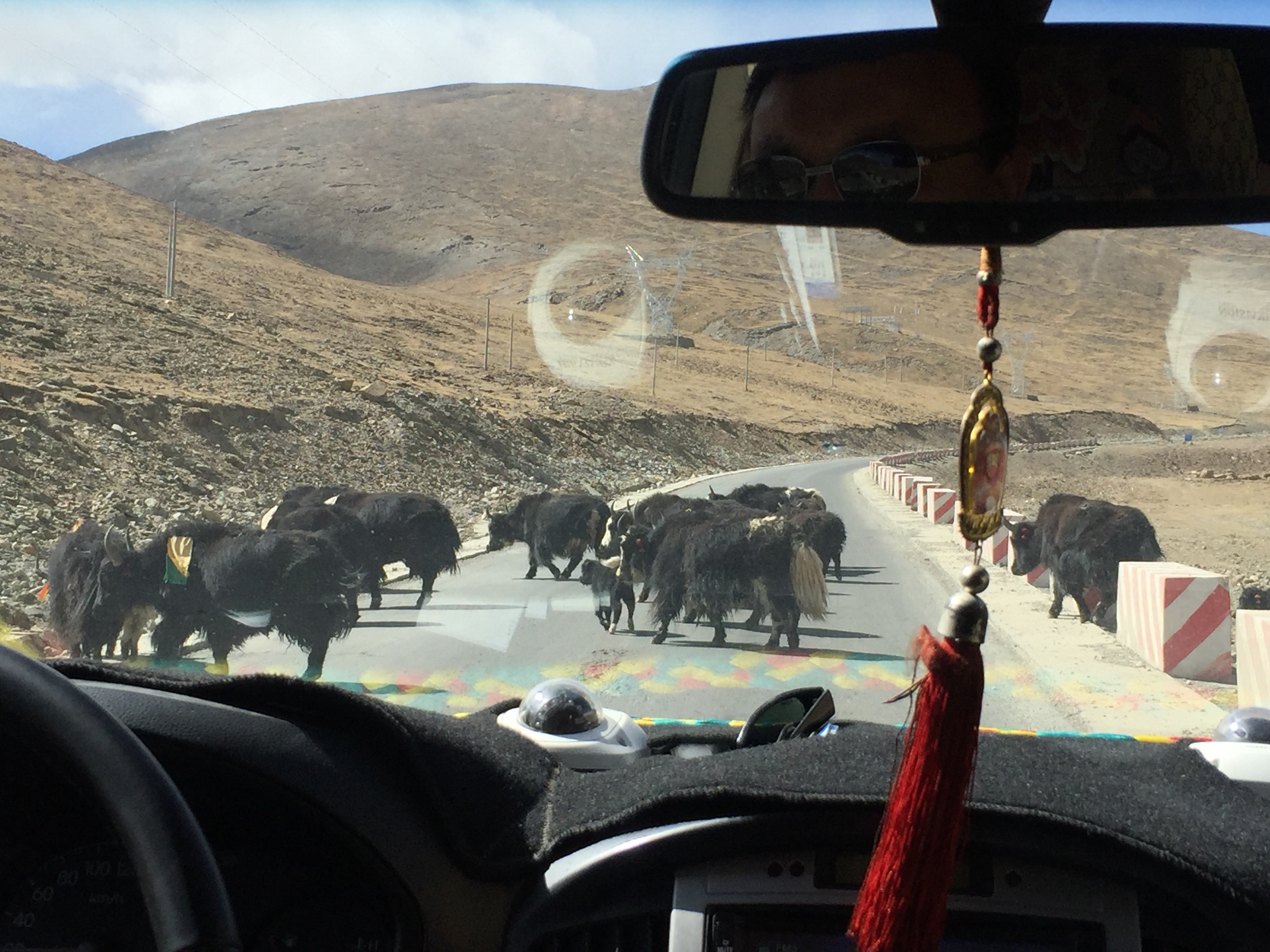
A picture to show the cameras in the front of the car. The yaks photobombed it
At a ‘normal’ speed, the journey would (and did previously) take three hours. Now it was double that. At some check points our driver received a note detailing the time he was ‘allowed’ to arrive at the next check point.
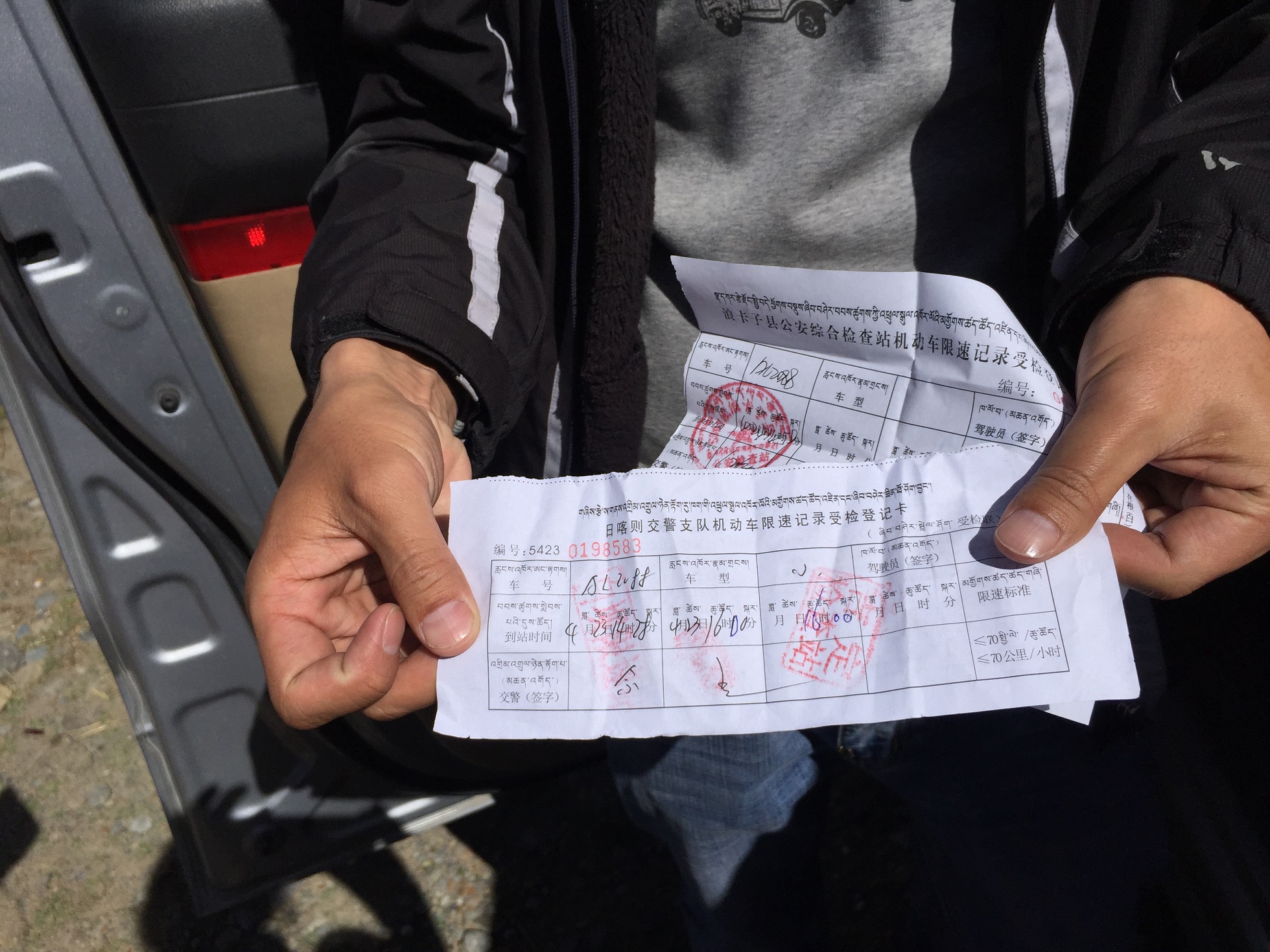
Not really possible to see on this picture but the guide and driver receives a time after which he is allowed to arrive at the next check point
The ludicrousness of this situation meant, if we arrived too early, we had to wait on the side of the road for 10 min before we could pass by the camera. This happened more than once because there was almost no traffic on the roads. If the driver disobeys the rules, he could lose his license and right to work forever. The authorities’ paranoia is unbelievable.
On the way, we had a really interesting stop. Tibetans don’t bury their dead in a grave, because at this altitude and dry air, the body does not decay in the ground. Traditionally they opted for sky burials, where they offered their loved ones to vultures and other animals by chopping the body into smaller pieces. From our viewpoint we could only see a small stupa with a few prayer flags, although a couple of large birds were circling above. I am not sure if I would want to see an actual burial but it was interesting to know that it still occurs today.
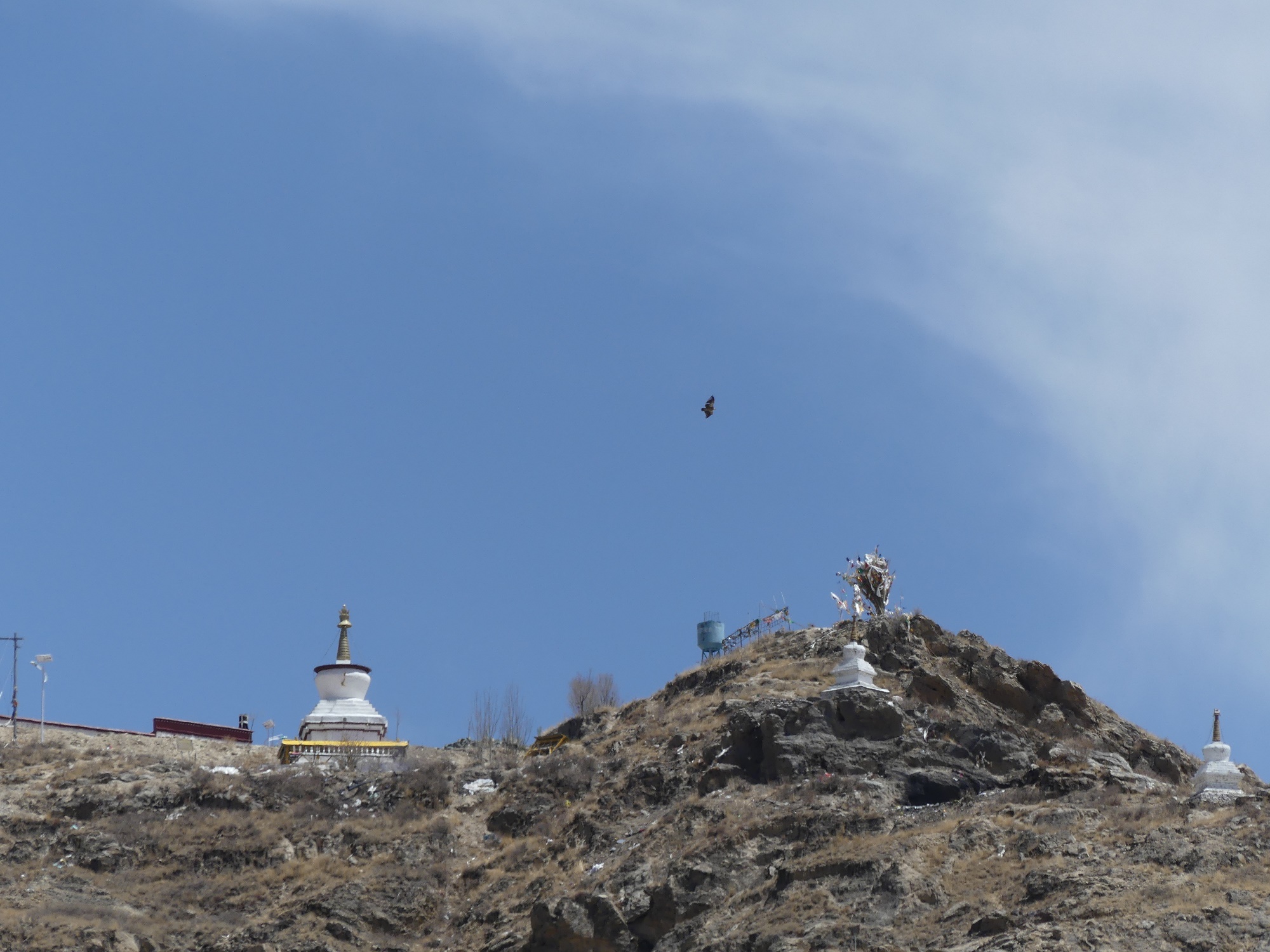
The stupa at the top of the hill where they perform sky burials
Our overnight stop, Shigatse, was thoroughly depressing. It is the second largest city in Tibet – a simple, modern and ever-expanding town that is even more Chinese than Lhasa. After spending an hour or so walking around, we came to the conclusion that it is not that modern, just very Chinese. And very ugly.
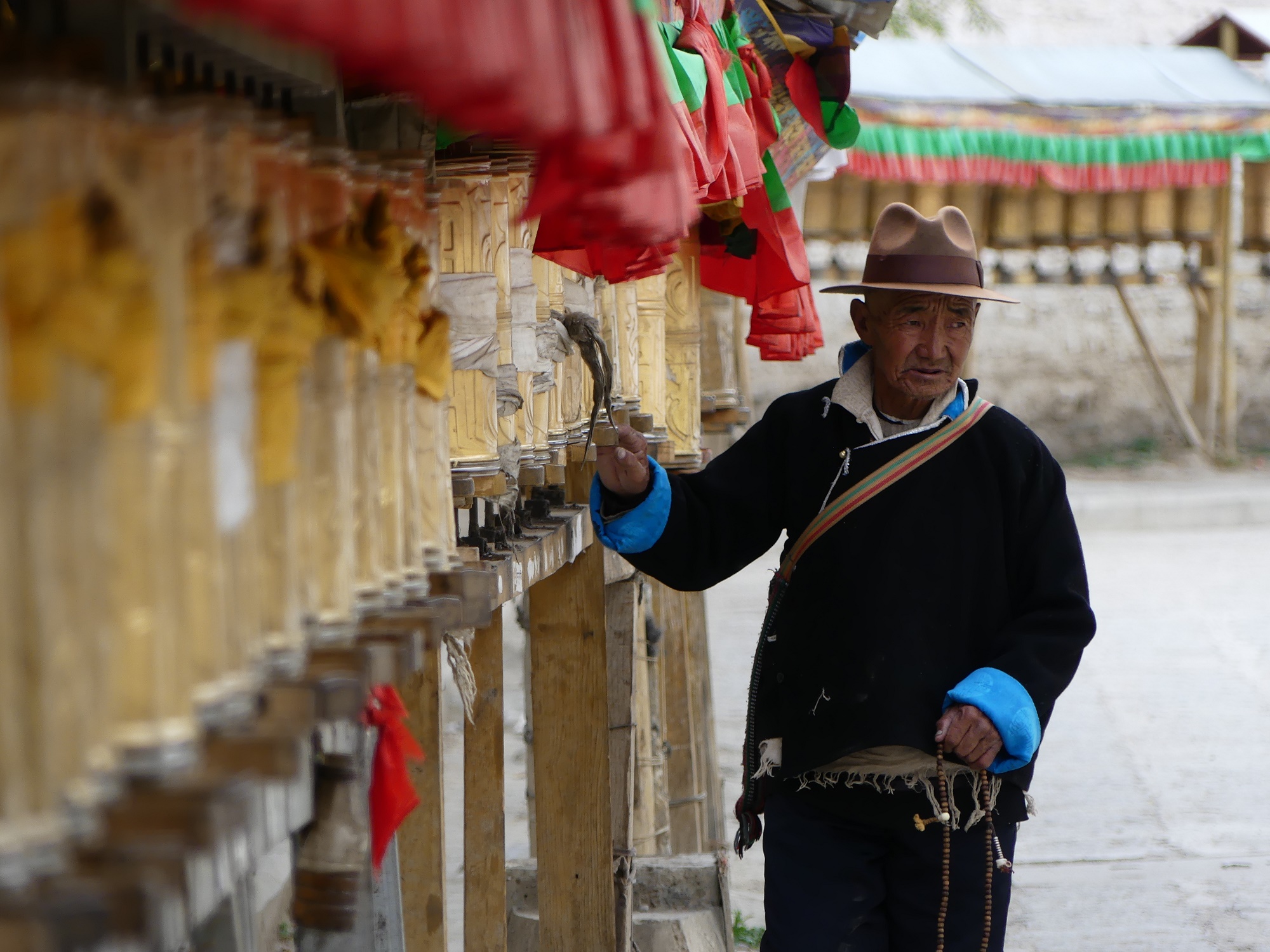
We saw countless prayer wheels in Tibet. This picture was taken in Shigatse
The following day we had an even longer drive ahead of us, but the excitement about seeing Everest made the 10-hour journey slightly more enjoyable. The drive would take us over two 5000m+ mountain passes and all the way till the foot of Everest.
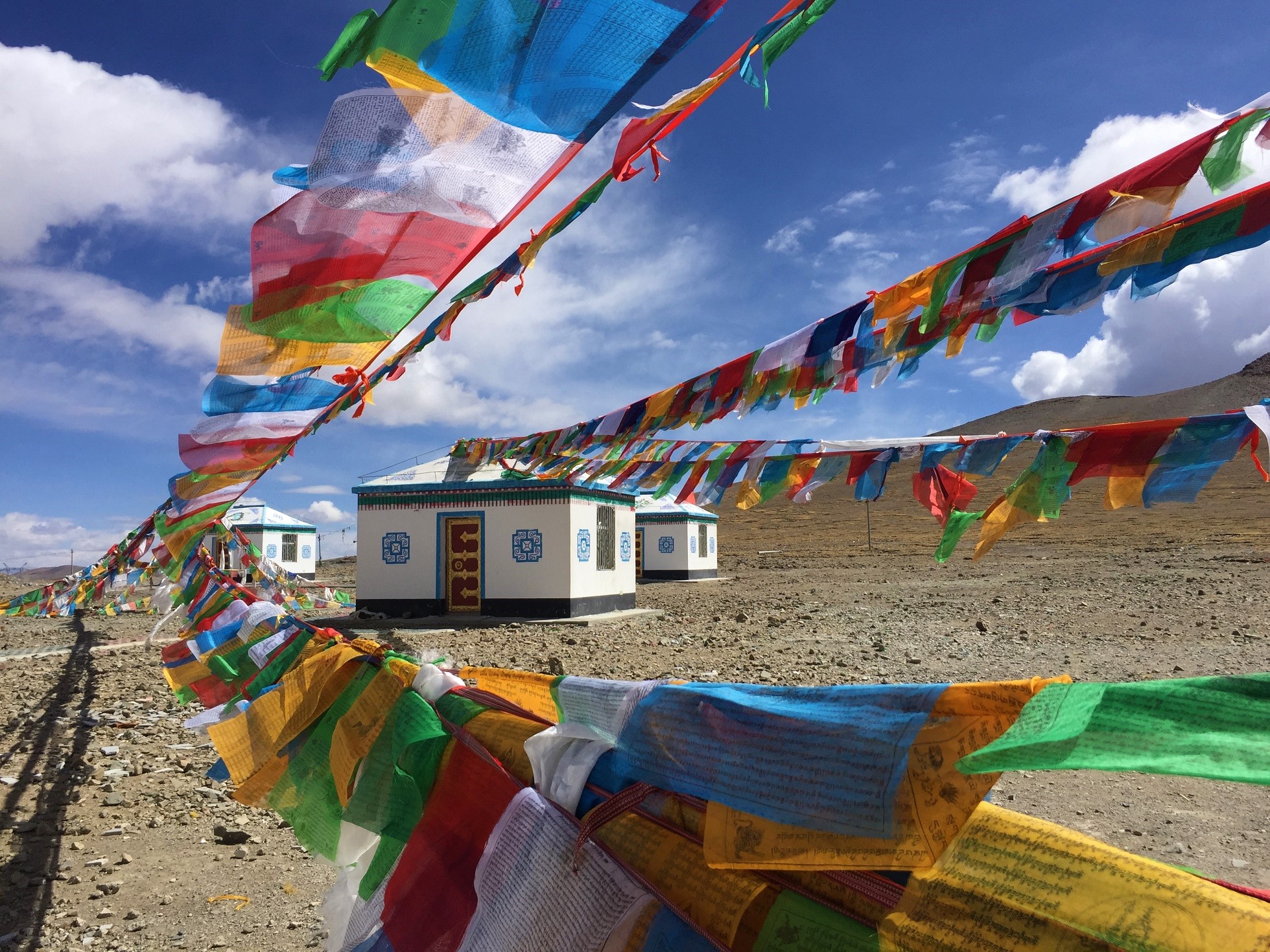
Prayer flags on the side of the road
Our first view of the Himalaya came at the top of the Gyatso Pass and although it was a little cloudy, it was stunning. From the lookout point at 5250m you could see five 8000m mountains (Makalu, Lhotse, Everest, Cho Oyo and Shishapama) in the distance. But we still had another mountain to cross.
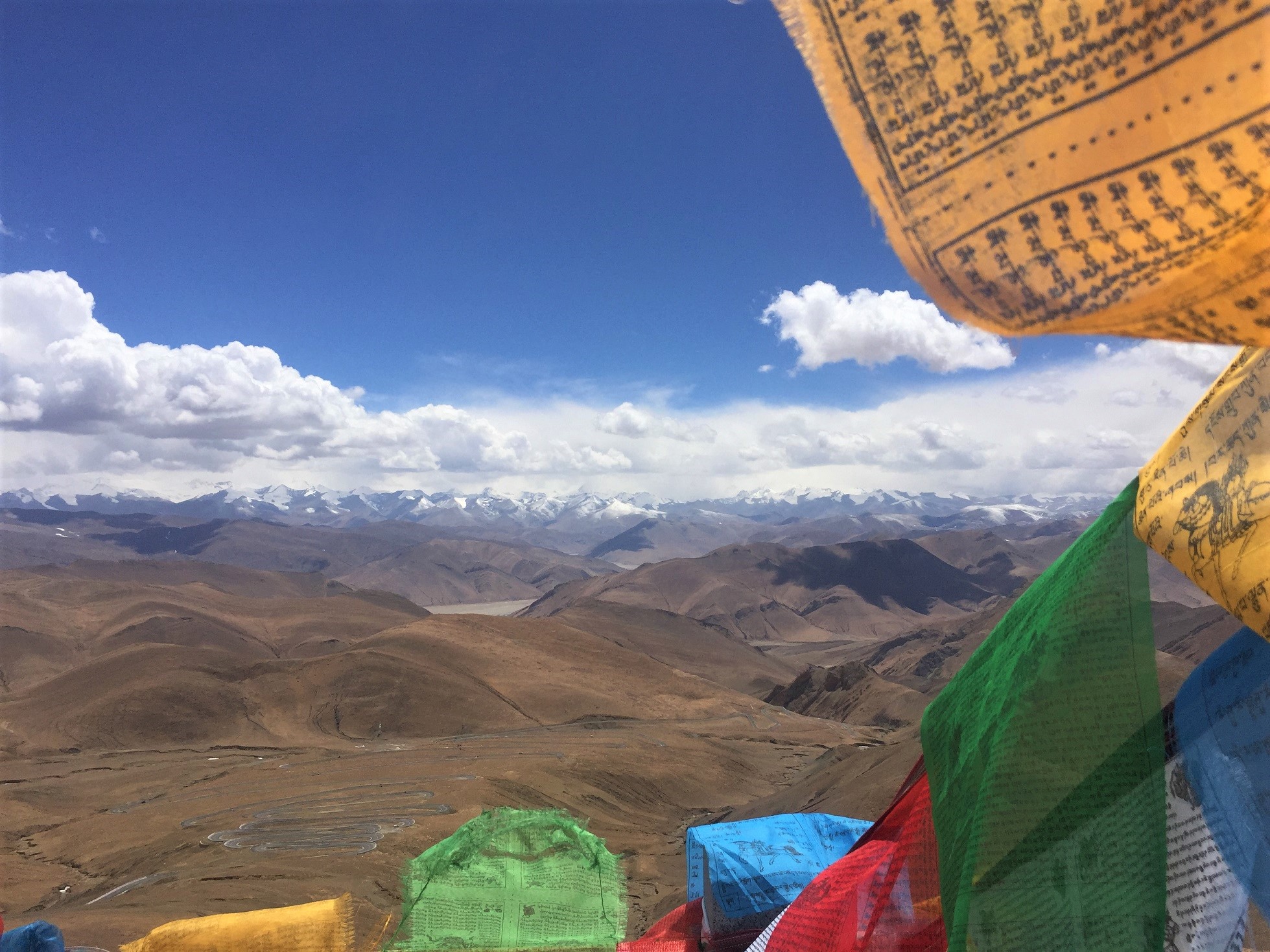
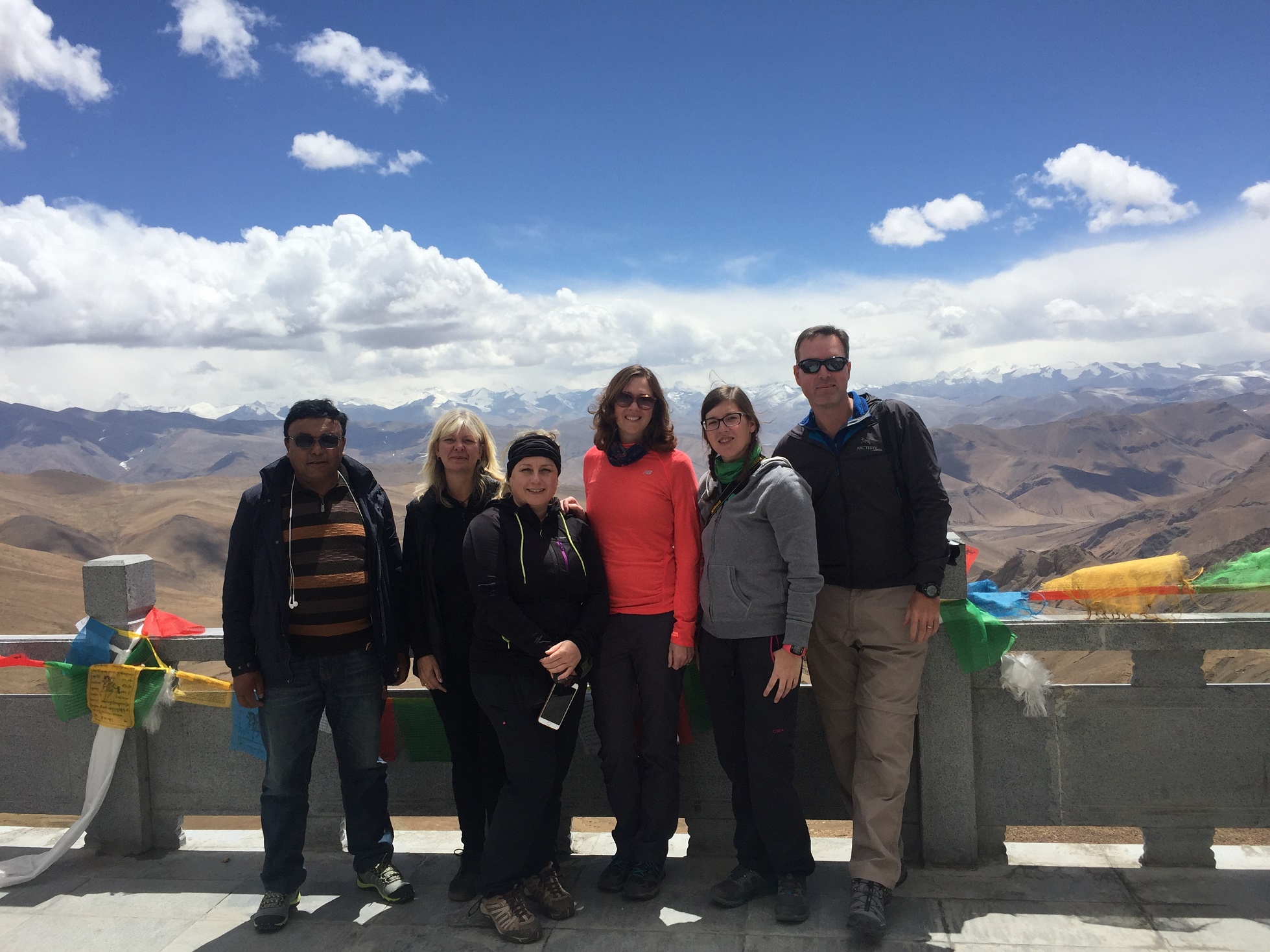
Team photo!
We turned off the Friendship Highway to cross over the Gawu pass. The road was new and the views were inspiring. And then we started climbing through the switchbacks. I lost count after 20 or so but I am sure there were at least double that. And that was only on the way up. If ever there was a road that is screaming out for a Top Gear episode – this is it! The road went up for almost 25km with constant switchbacks and amazing views. I would love to have been driving (or cycling) it myself. We stopped at the top to wonder not only at Everest but at the spaghetti string road that lay before us for the descent.
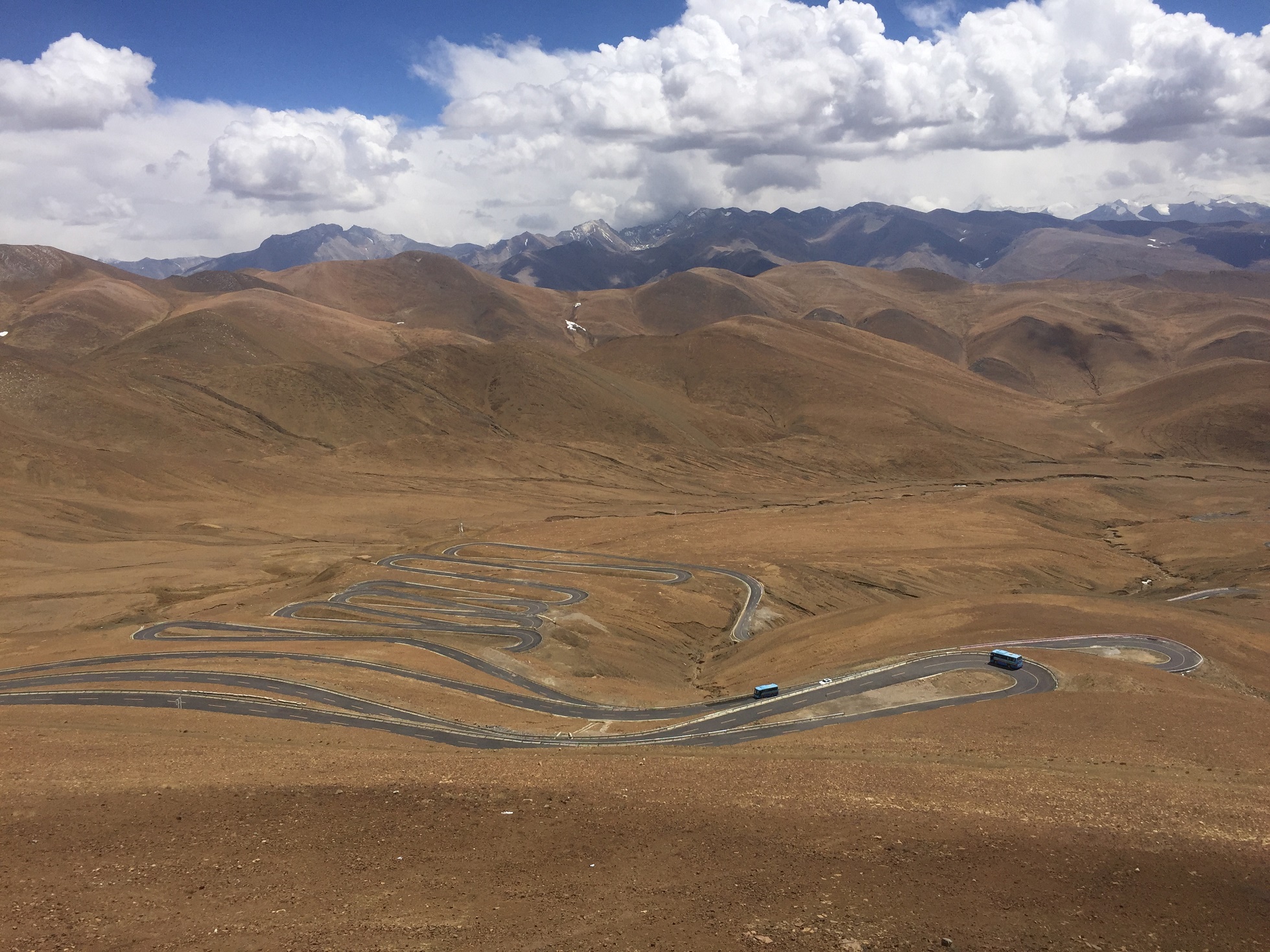
At 6pm we eventually arrived at our tent village in the Rongbuk Valley. I was surprised today by just how dry the landscape was. I had imagined that every mountain would be covered in snow and that every river would be gushing with glacier clear water. But the sad reality is that the Chinese have been damming a lot of the rivers and so downstream the local farmers are left with just a trickle. I believe this is a big reason why Tibet is so important for China – the water and the rich mineral deposits.
Our tent village was like a pop-up town. There were 50 tents that get pitched only in the summer months. The owners are nomads that use the summer months to get a bit of revenue to support themselves through winter. Every tent is heated with a little stove and was surprisingly cosy and comfortable. But after 10 hours in a minivan, pretty much anything other than a car would be comfortable.
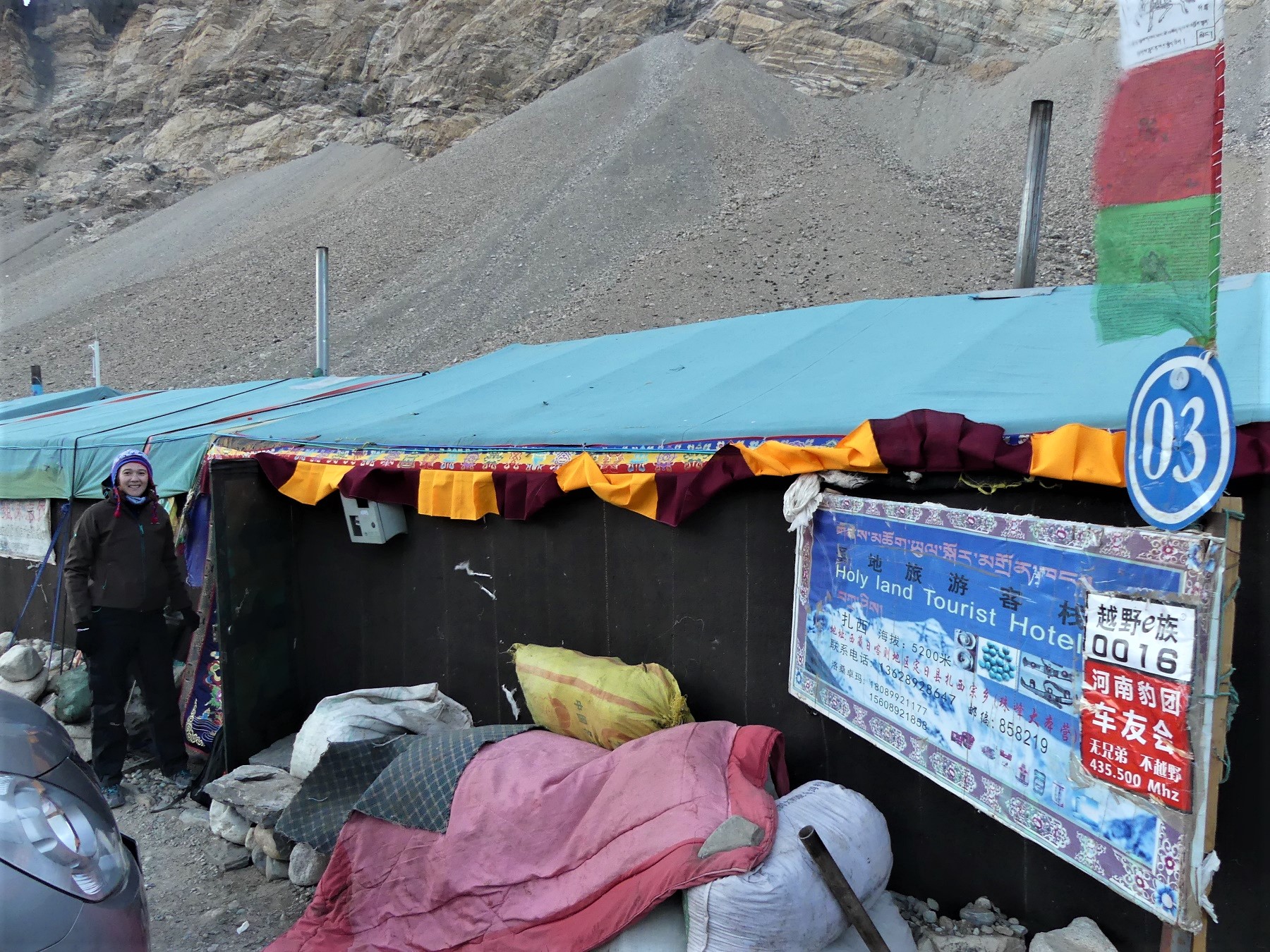
Adrie outside our tent – number 3!
It was cloudy but clearing as we began our walk to Everest Base Camp, covering the last 3km from the tents on foot. The walk, while not difficult at all, was still at 5200m so any uphill left you a little out of breath.
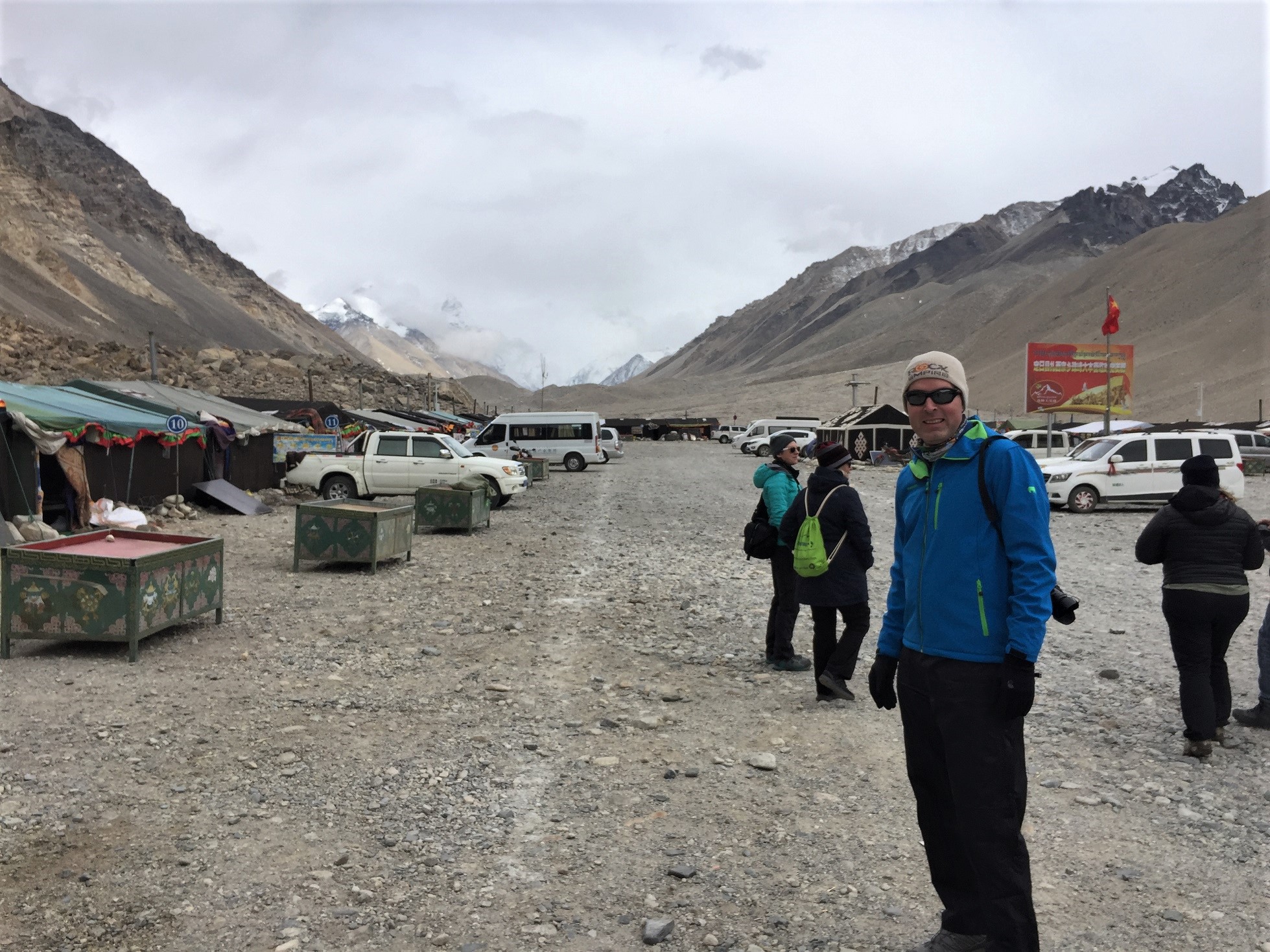
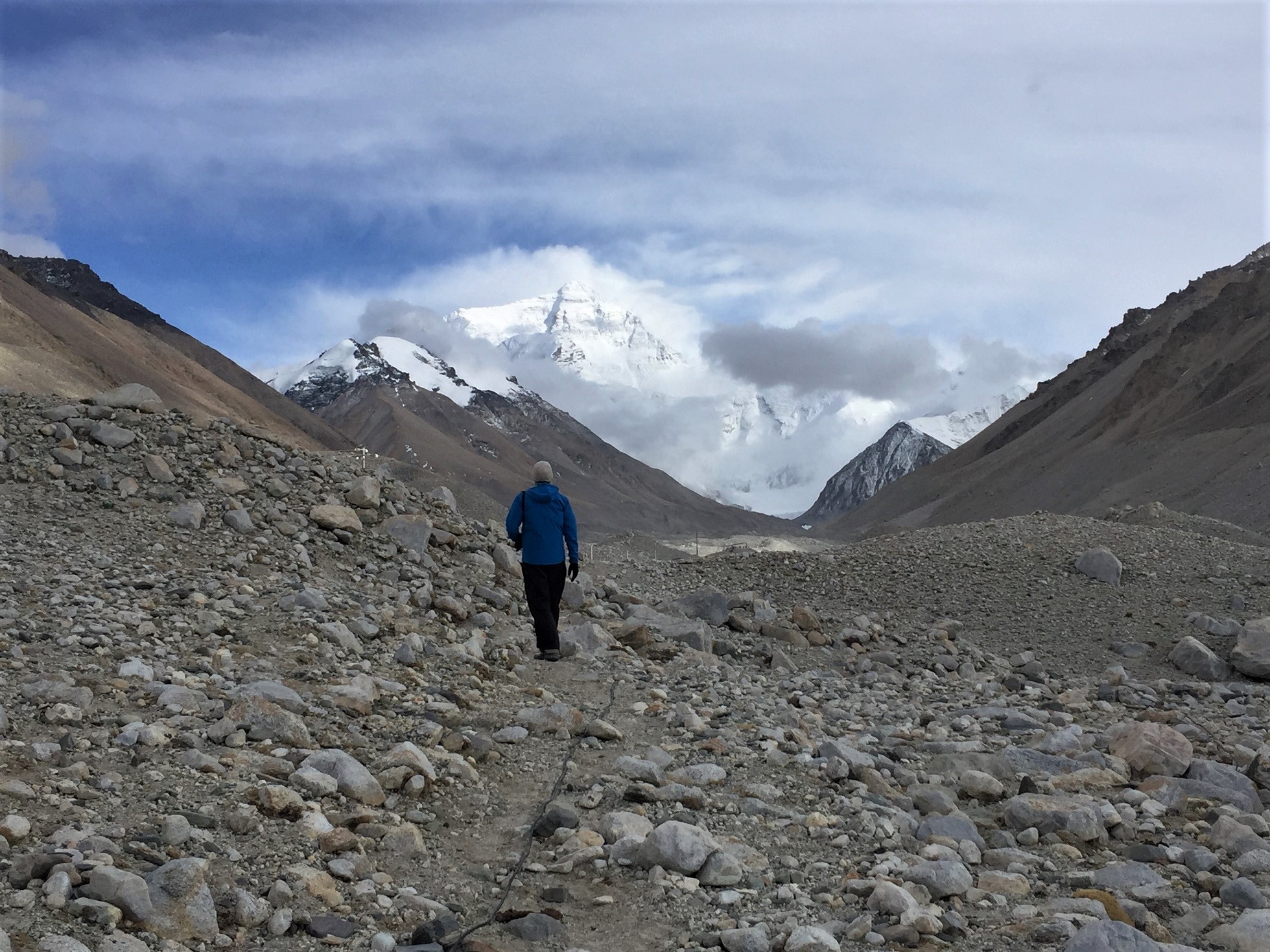
We stopped at the old Rongbuk Monastery, the world’s highest monastery, for a quick visit. I couldn’t imagine spending a winter here to meditate; the wind was blowing down the valley and it was rather chilly already. I have read so much about Rongbuk and Everest over the years so I was ecstatic to actually be here.
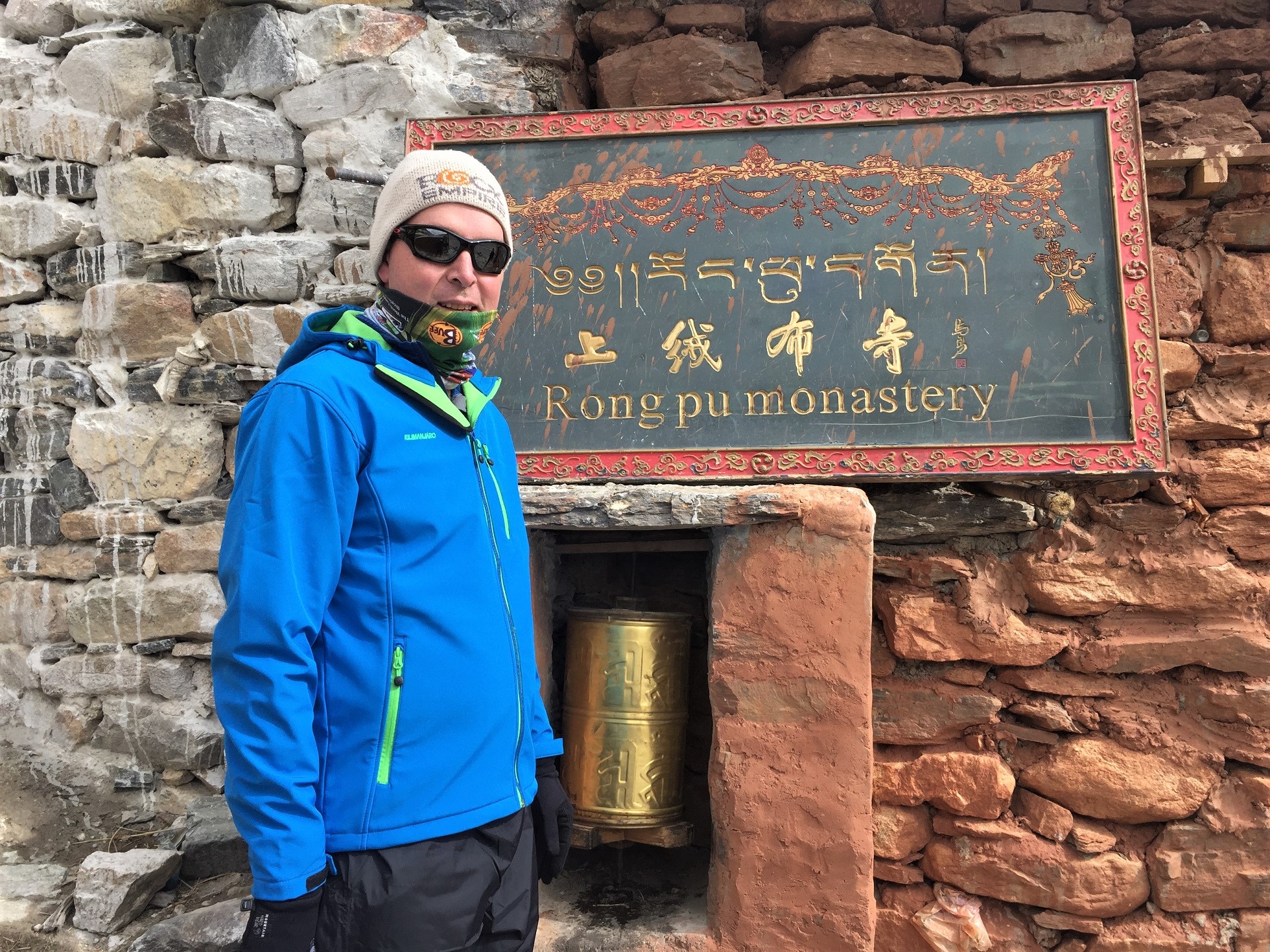
The view from Base Camp was quite simply breath-taking. From the Tibet side you can see the whole mountain, albeit slightly obscured by clouds this evening. I have previously hiked the 10 days to the Nepal Base Camp, which was amazing, but this was so different, not least because we could drive this far. From the Nepal side you cannot actually see the summit because you are too close to the base and other mountains block your view. You have to climb a surrounding peak to get a glimpse and even then a lot of Everest is obscured by Lhotse. I did feel like a bit of a cheat driving to Everest, as opposed to hiking, but the view up the Rongbuk Valley of the mighty peak is unparalleled. It is truly humbling to be standing at 5200m and look up to a mountain that is still almost 3.5km higher than you!
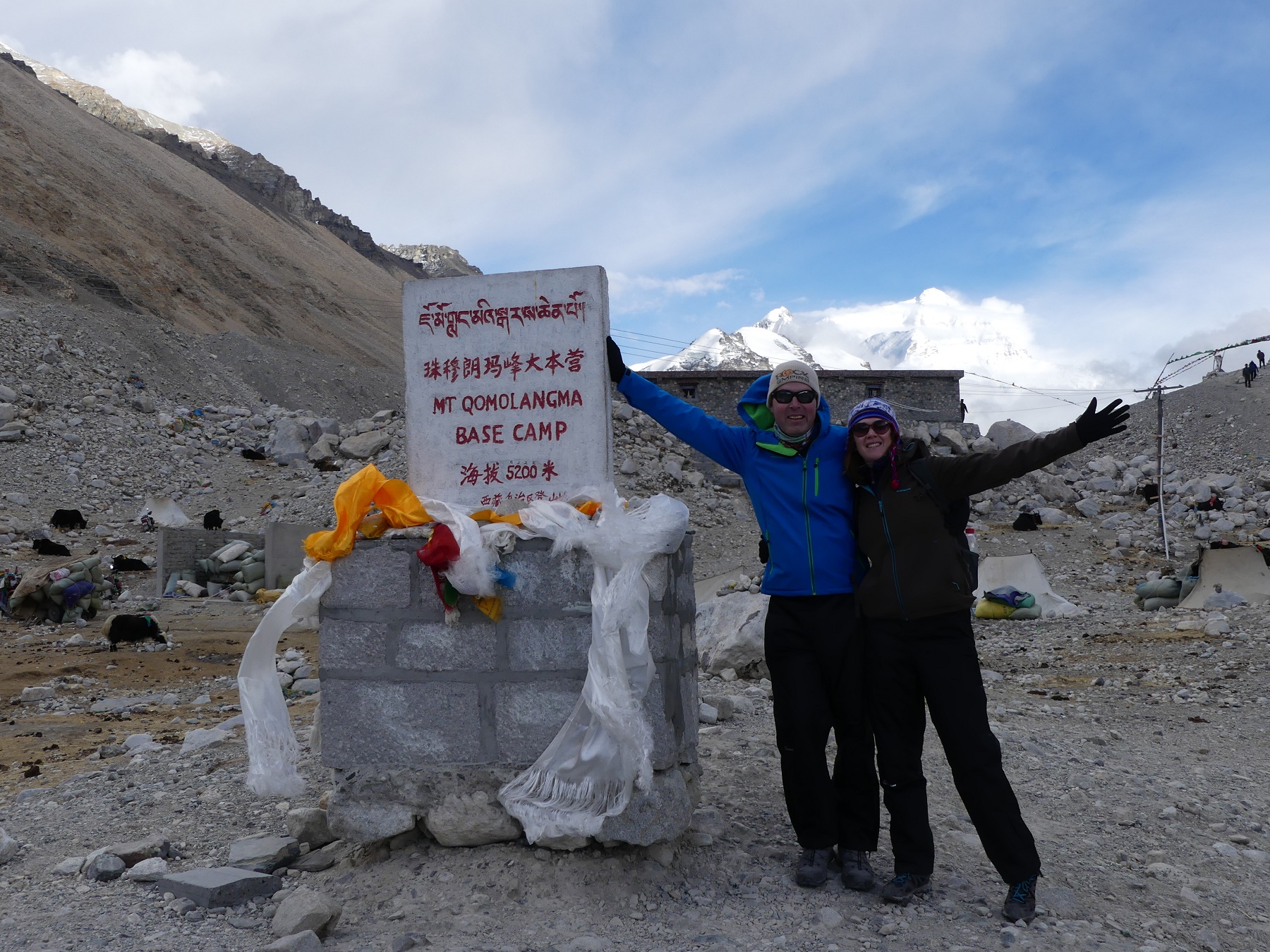
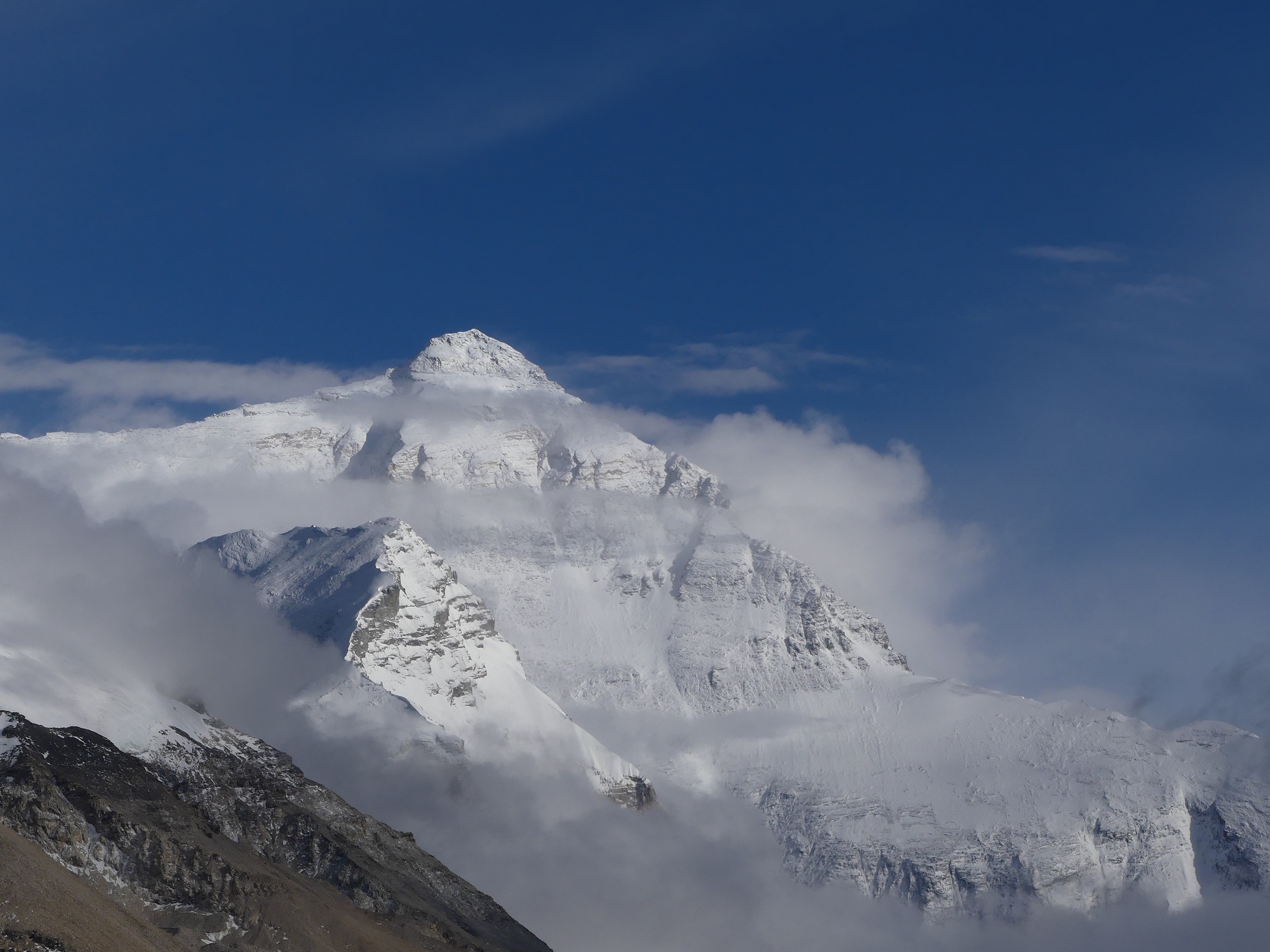
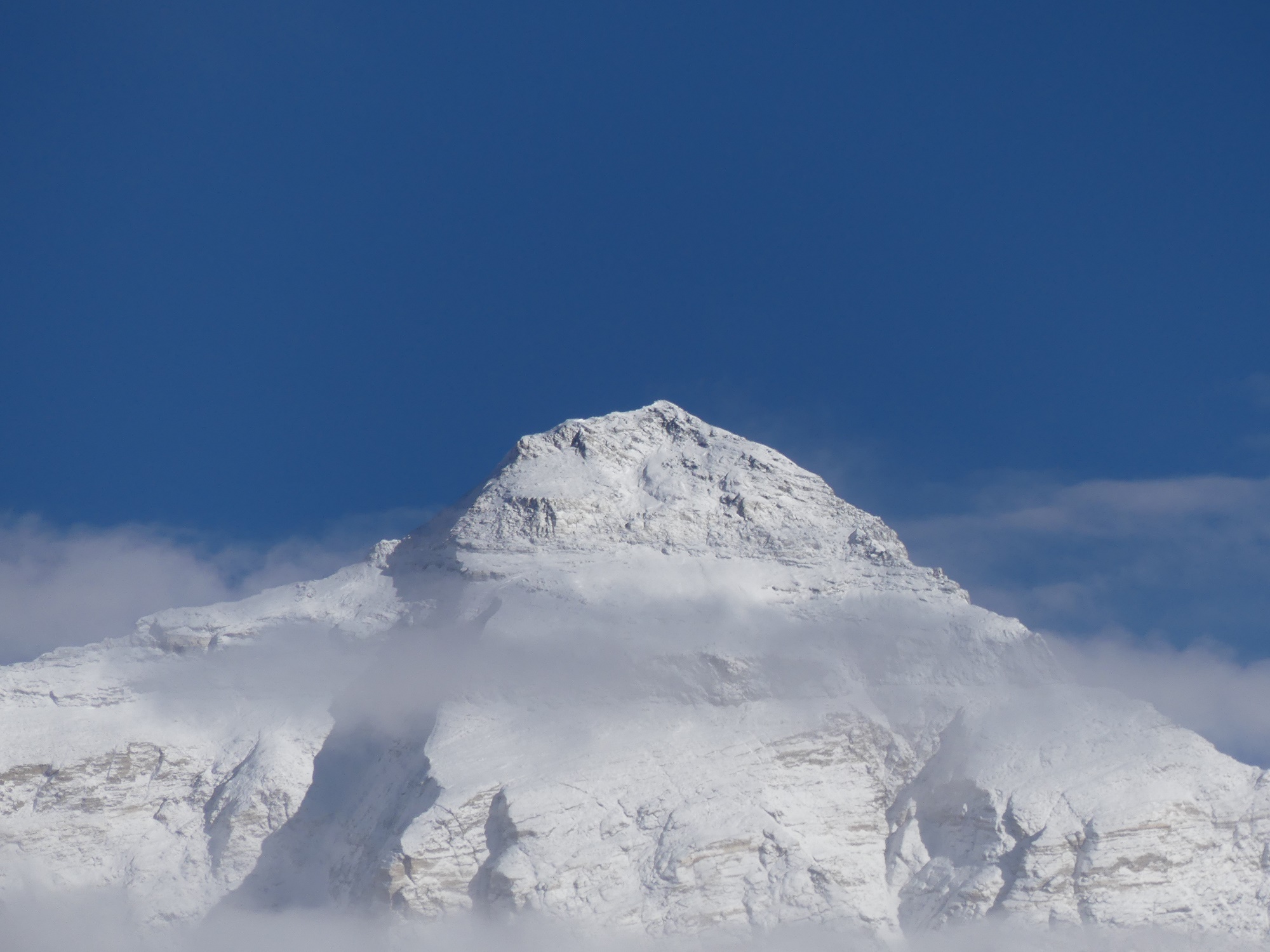
It was starting to get dark in the valley as we started back, but Everest was still bathed in light. It was also getting quite cold. We had the choice of staying to watch the sunset on top of a windy ridge or quickly climbing lower to see the sunset a bit further down the valley. By now, Adrie had completely frozen so it was an easy choice. Our guide tried to tempt us by saying we only had to wait 10 minutes for the sunset but we decided to head back. It was sad to leave because it was so stunning. Often we found ourselves walking backwards simply to watch the mountain again.
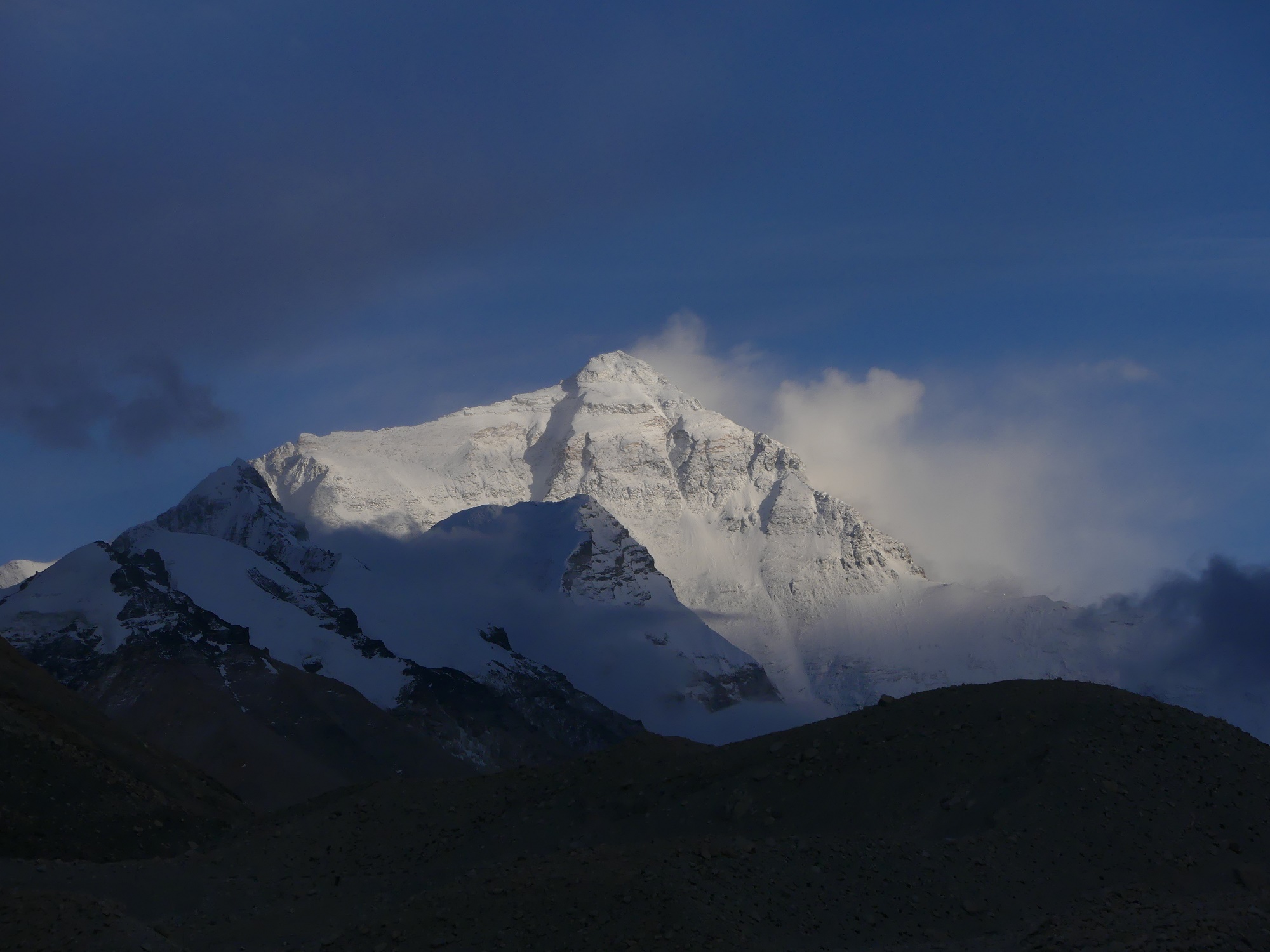
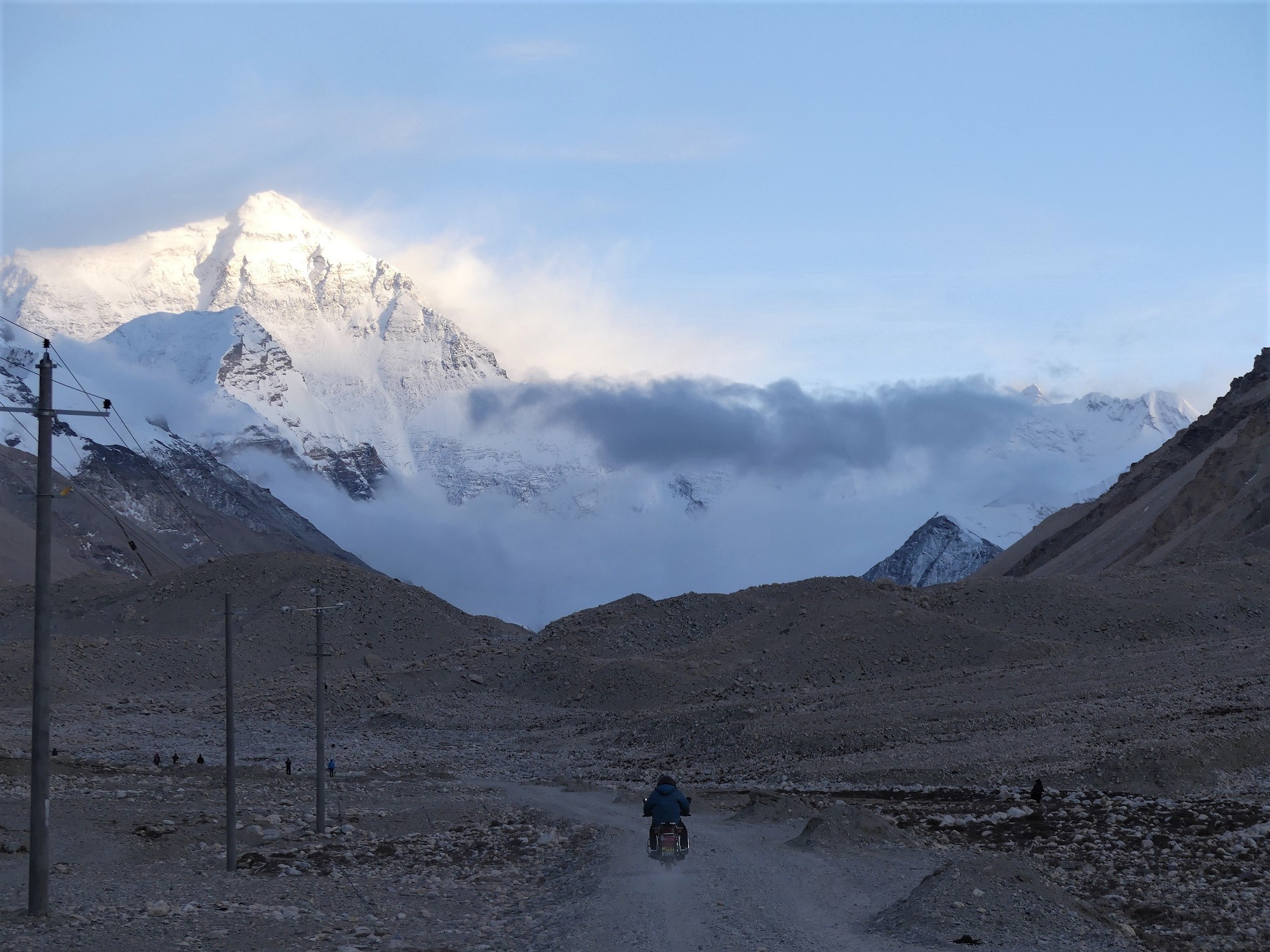
We got back to the stove in the tent to warm up and Adrie had to de-ice her hands. Only about an hour later the others turned up cold and very tired. They clearly waited longer than the proverbial 10 minutes! We still hadn’t really warmed up properly yet so we were both pleased we came back when we did. We celebrated seeing Everest with some beers before getting into bed.

Home for the night
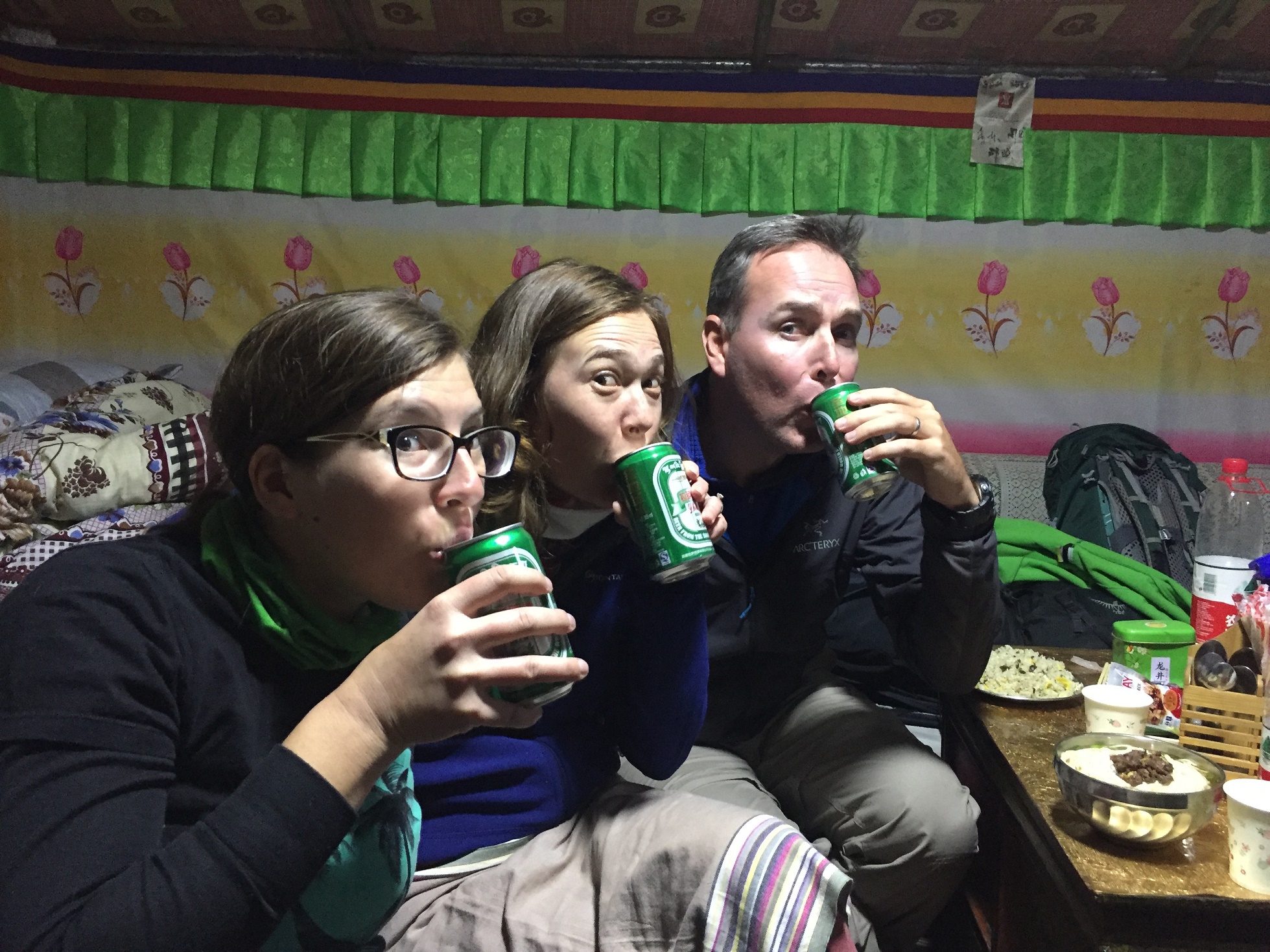
Michaela, Adrie and I celebrating with a few local beers
It was an interesting night in the tent at Everest Base Camp. The beds were comfortable (surprisingly) and the duvets warm – almost too warm. Despite some comfort I did not get much sleep and neither did any of the others. This was not great seeing we had a long day ahead of us in the car!
